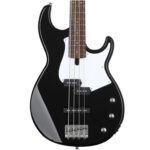Suspended chords, often called “sus chords,” are a fascinating and widely used variation of the major and minor chords you already know. If you think they sound unfamiliar, think again! You’ve almost certainly heard them countless times in popular music, adding a distinctive color and movement to songs you love, like Queen’s iconic “Crazy Little Thing Called Love.” Sus chords are incredibly versatile and can bring a new dimension to your chord progressions, especially when you want to create interest around a single chord.
In this guide, we’ll demystify suspended chords for guitarists. We’ll explore what they are, how they’re constructed on the fretboard, and most importantly, how you can use them to enrich your guitar playing and songwriting.
What Exactly Are Sus Chords?
At their core, suspended chords are created by altering the 3rd interval of a standard major or minor chord. Remember the building blocks of chords? Let’s quickly recap:
- Major Chords: Built using the root, major 3rd, and perfect 5th intervals.
- Minor Chords: Built using the root, minor 3rd, and perfect 5th intervals.
The crucial difference in sus chords is the removal of the 3rd. In its place, we “suspend” either the 2nd or the 4th interval from the root. This substitution is what gives sus chords their unique sound.
Why is removing the 3rd so significant? Because the 3rd is the interval that defines whether a chord is major or minor. Major chords have a major 3rd, giving them a bright, happy sound, while minor chords have a minor 3rd, resulting in a darker, sadder quality. By eliminating the 3rd, sus chords become neither major nor minor. This ambiguity is part of their appeal, creating a sense of anticipation and a less defined harmonic color.
The function of a sus chord within a chord progression depends on the surrounding chords. However, as a general guideline:
- Sus4 Chords: Often feel like they need to resolve downwards to a major or minor chord. The 4th interval creates a slight tension that is naturally resolved by moving down to the 3rd.
- Sus2 Chords: Tend to resolve upwards to a major or minor chord. The 2nd interval creates a different kind of tension that is resolved by moving up to the 3rd.
Understanding Sus Chord Notation
When you encounter suspended chords in written music or chord charts, they are typically notated using the abbreviation “sus” after the root note of the chord. To differentiate between the two types:
-
Sus2 Chords: Indicate the 2nd interval is used instead of the 3rd. They are written as “sus2.”
- Example: Gsus2, Csus2, Dsus2
-
Sus4 Chords: Indicate the 4th interval is used instead of the 3rd. They can be written as either “sus4” or simply “sus.”
- Example: Gsus4, Gsus, Csus4, Csus, Dsus4, Dsus
Therefore, if you see “Gsus,” it almost always means Gsus4. If it’s Gsus2, it will be specifically written as “Gsus2.”
Essential Sus2 and Sus4 Guitar Chords
Certain suspended chords are more commonly used in music, especially those that are easily playable in open positions on the guitar. Open chords, in general, are beginner-friendly, and these sus chord variations are just as accessible, offering a simple way to embellish basic chord progressions.
Here are chord diagrams for some frequently used sus chords in the open position:
Practice these open sus chords. You’ll find that they are often just a finger or two away from their major counterparts, making them easy to incorporate into your playing.
Exploring Movable Sus2 and Sus4 Chord Shapes
Building upon the open position sus chords, we can leverage chord shapes from the CAGED system – specifically the E form, G form, A form, and D form – to create movable sus chord shapes. These shapes allow you to play sus chords anywhere on the guitar neck.
E & G Form Sus Chords: Versatile Barre Chord Options
The G form chord shape provides a movable sus2 chord, while the E form chord shape gives us a movable sus4 chord.
The sus4 shape, derived from the E form, can be played as a standard barre chord, making it very practical for moving up and down the neck.
A Form Sus Chords: Barreable Sus2 and Sus4 Shapes
The A form chord offers both movable sus2 and sus4 chord shapes. Both of these shapes can also be played as barre chords.
These A form shapes are incredibly useful for creating sus chord variations in different keys and positions.
D Form Sus Chords
The D form chord shape also provides movable suspended chords, expanding your options further up the neck. Experiment with these shapes to discover new sonic textures.
Practical Applications: Using Suspended Chords in Your Music
Suspended chords are remarkably versatile and can be used in various musical contexts. Let’s explore some common and effective ways to incorporate them into your guitar playing.
Creating Dynamic Movement Around a Single Root Chord
One of the most popular uses of sus chords is to generate movement and interest around a single root note. Think about Queen’s “Crazy Little Thing Called Love” again.
The intro riff beautifully demonstrates this technique, alternating between a D major chord and a Dsus4 chord. If the riff only used a D major chord strummed with the same rhythm, it would sound much less engaging and lively. The Dsus4 adds a subtle tension and release, creating a catchy and dynamic feel.
Listen to how the interplay between D and Dsus4 enhances the rhythm and melody:
Queen – “Crazy Little Thing Called Love” D/Dsus4 riff
Led Zeppelin’s “Tangerine” offers another excellent example. The opening riff uses a combination of sus2 and sus4 chords around an Am chord to create a flowing movement that smoothly transitions to a G major chord. The Asus4 and Asus2 chords add a melancholic and wistful quality to the riff.
Listen to the subtle yet effective use of sus chords in “Tangerine”:
Led Zeppelin – “Tangerine” Am/Asus4/Asus2 riff
You can hear this technique again later in “Tangerine,” on the D chord at the end of the opening riff and just before the chorus, further showcasing the versatility of sus chords in creating subtle shifts in mood and harmony.
Listen closely to how the D, Dsus4, and Dsus2 chords interact in this section:
Led Zeppelin – “Tangerine” D/Dsus4/Dsus2 riff
Experiment with alternating between a major or minor chord and its sus2 or sus4 variation to create your own dynamic chord movements.
Incorporating Sus Chords into Chord Progressions
Suspended chords are not limited to creating movement around a single chord; they can also be integrated into chord progressions just like any major or minor chord. Consider a simple chorus progression in the key of A major: A – B – C#m.
A – B – C#m Chord Progression
Now, let’s try substituting the B major chord with a Bsus2 chord. The progression becomes: A – Bsus2 – C#m.
A – Bsus2 – C#m Chord Progression
This modified progression often sounds even more compelling than the original. The Bsus2 adds a touch of sweetness and a slightly different harmonic color, enhancing the overall feel of the chorus.
However, it’s important to note that sus chords are not always interchangeable with major or minor chords in every progression. Because you are replacing the crucial 3rd interval with a 2nd or 4th, the resulting sus chord may not always fit within the diatonic harmony of a particular key. In such cases, using a sus chord might sound out of place or create unwanted dissonance. Therefore, experimentation and careful listening are key to effectively using sus chords in progressions. Trust your ear and see what sounds best!
Final Thoughts: Unleash the Potential of Sus Chords
Suspended chords are powerful tools for guitarists looking to add depth, movement, and a unique harmonic flavor to their playing. By replacing the 3rd of a major or minor chord with a 2nd (sus2) or 4th (sus4) interval, you create chords that are neither strictly major nor minor, offering a refreshing alternative to standard triads.
Remember that sus2 chords often create an upward resolving tendency, while sus4 chords typically resolve downwards. Whether you’re using them to create rhythmic interest around a single chord or incorporating them into chord progressions, sus chords are a versatile addition to your guitar vocabulary.
Start experimenting with the open and movable sus chord shapes we’ve discussed, and listen to how they are used in your favorite songs. With a little practice, you’ll be unlocking the subtle beauty and dynamic potential of sus chords, adding a new dimension to your guitar playing and songwriting.


